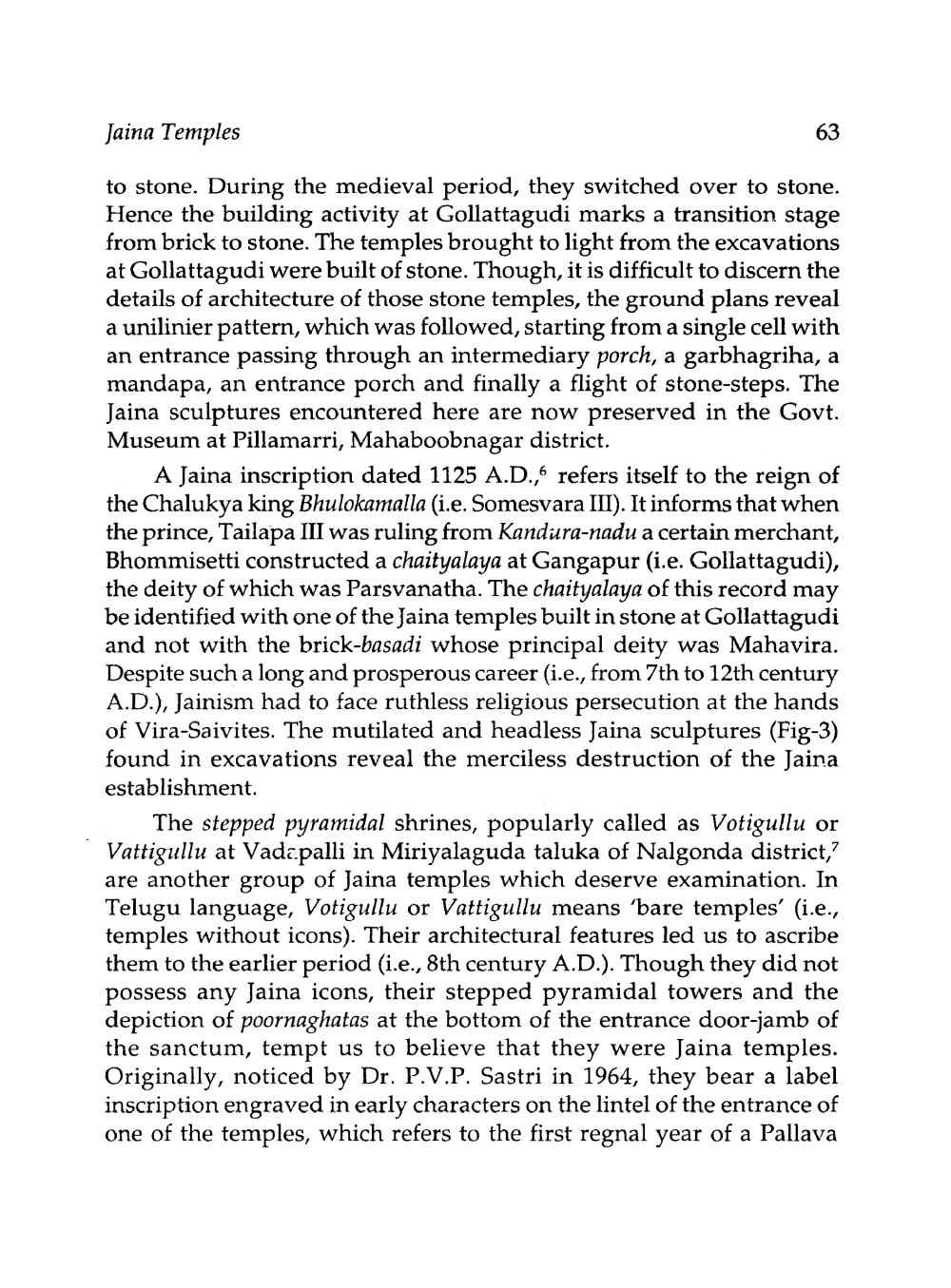________________
Jaina Temples
to stone. During the medieval period, they switched over to stone. Hence the building activity at Gollattagudi marks a transition stage from brick to stone. The temples brought to light from the excavations at Gollattagudi were built of stone. Though, it is difficult to discern the details of architecture of those stone temples, the ground plans reveal a unilinier pattern, which was followed, starting from a single cell with an entrance passing through an intermediary porch, a garbhagriha, a mandapa, an entrance porch and finally a flight of stone-steps. The Jaina sculptures encountered here are now preserved in the Govt. Museum at Pillamarri, Mahaboobnagar district.
63
A Jaina inscription dated 1125 A.D.," refers itself to the reign of the Chalukya king Bhulokamalla (i.e. Somesvara III). It informs that when the prince, Tailapa III was ruling from Kandura-nadu a certain merchant, Bhommisetti constructed a chaityalaya at Gangapur (i.e. Gollattagudi), the deity of which was Parsvanatha. The chaityalaya of this record may be identified with one of the Jaina temples built in stone at Gollattagudi and not with the brick-basadi whose principal deity was Mahavira. Despite such a long and prosperous career (i.e., from 7th to 12th century A.D.), Jainism had to face ruthless religious persecution at the hands of Vira-Saivites. The mutilated and headless Jaina sculptures (Fig-3) found in excavations reveal the merciless destruction of the Jaina establishment.
The stepped pyramidal shrines, popularly called as Votigullu or Vattigullu at Vadapalli in Miriyalaguda taluka of Nalgonda district,? are another group of Jaina temples which deserve examination. In Telugu language, Votigullu or Vattigullu means 'bare temples' (i.e., temples without icons). Their architectural features led us to ascribe them to the earlier period (i.e., 8th century A.D.). Though they did not possess any Jaina icons, their stepped pyramidal towers and the depiction of poornaghatas at the bottom of the entrance door-jamb of the sanctum, tempt us to believe that they were Jaina temples. Originally, noticed by Dr. P.V.P. Sastri in 1964, they bear a label inscription engraved in early characters on the lintel of the entrance of one of the temples, which refers to the first regnal year of a Pallava




